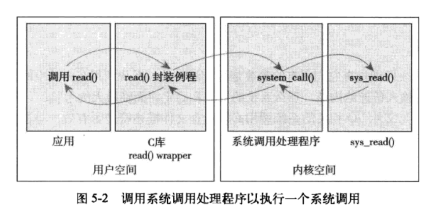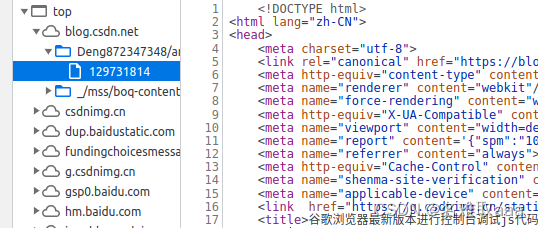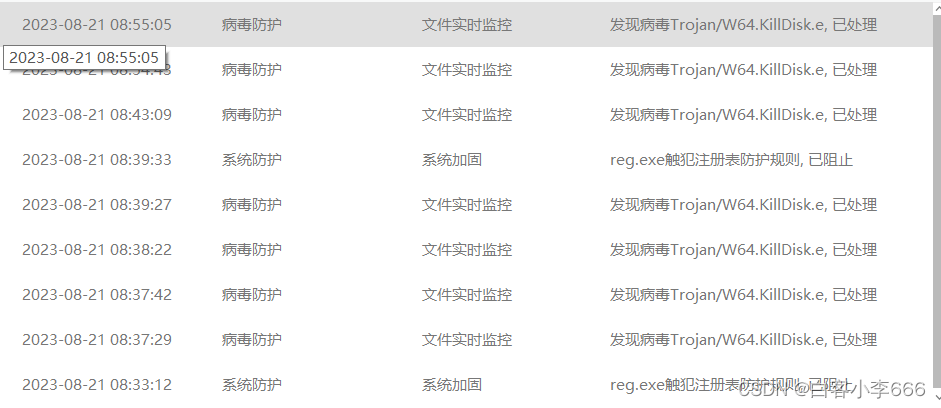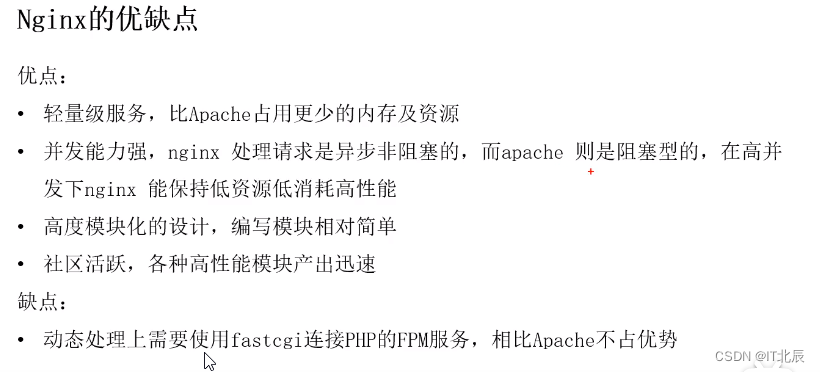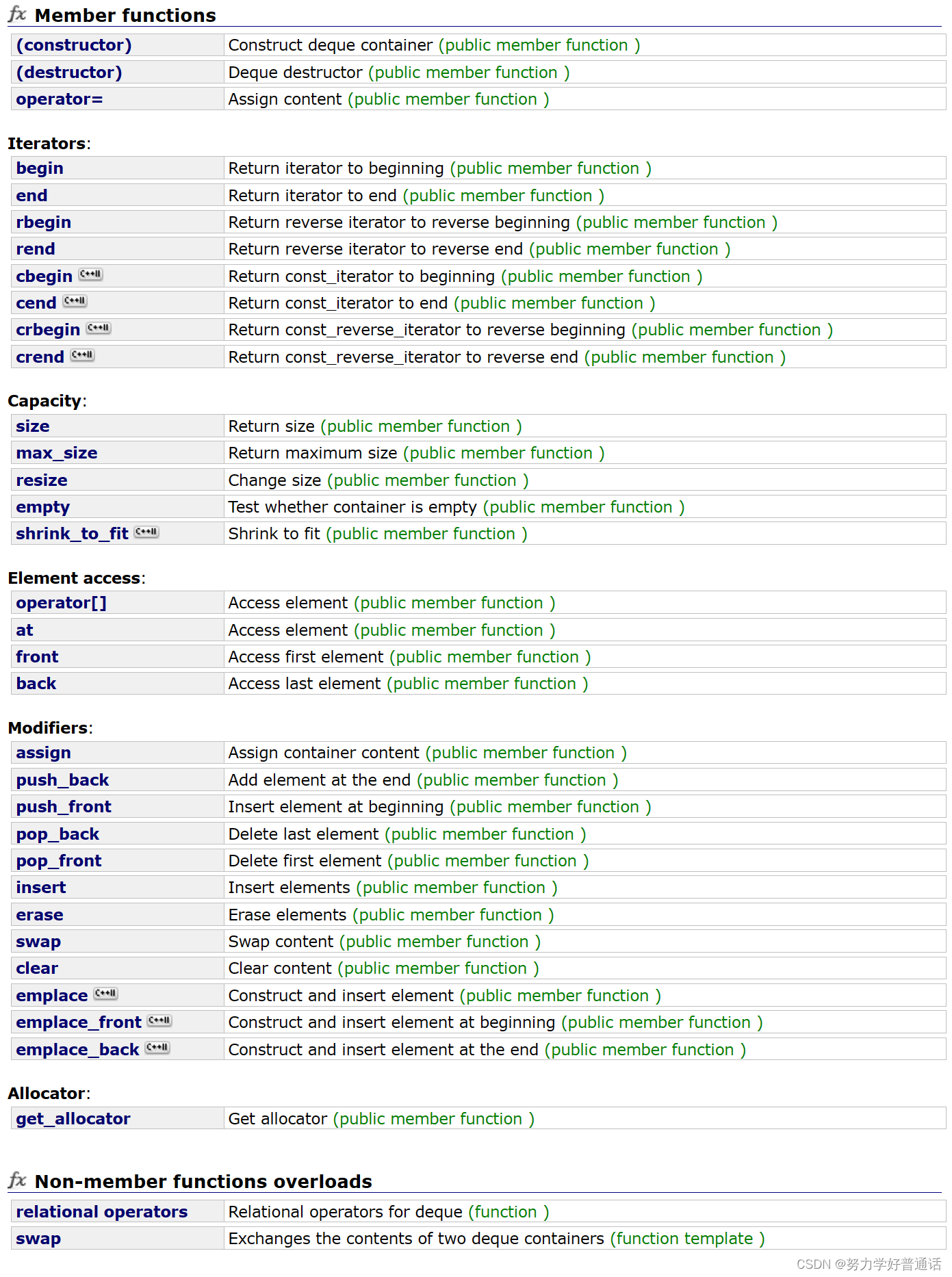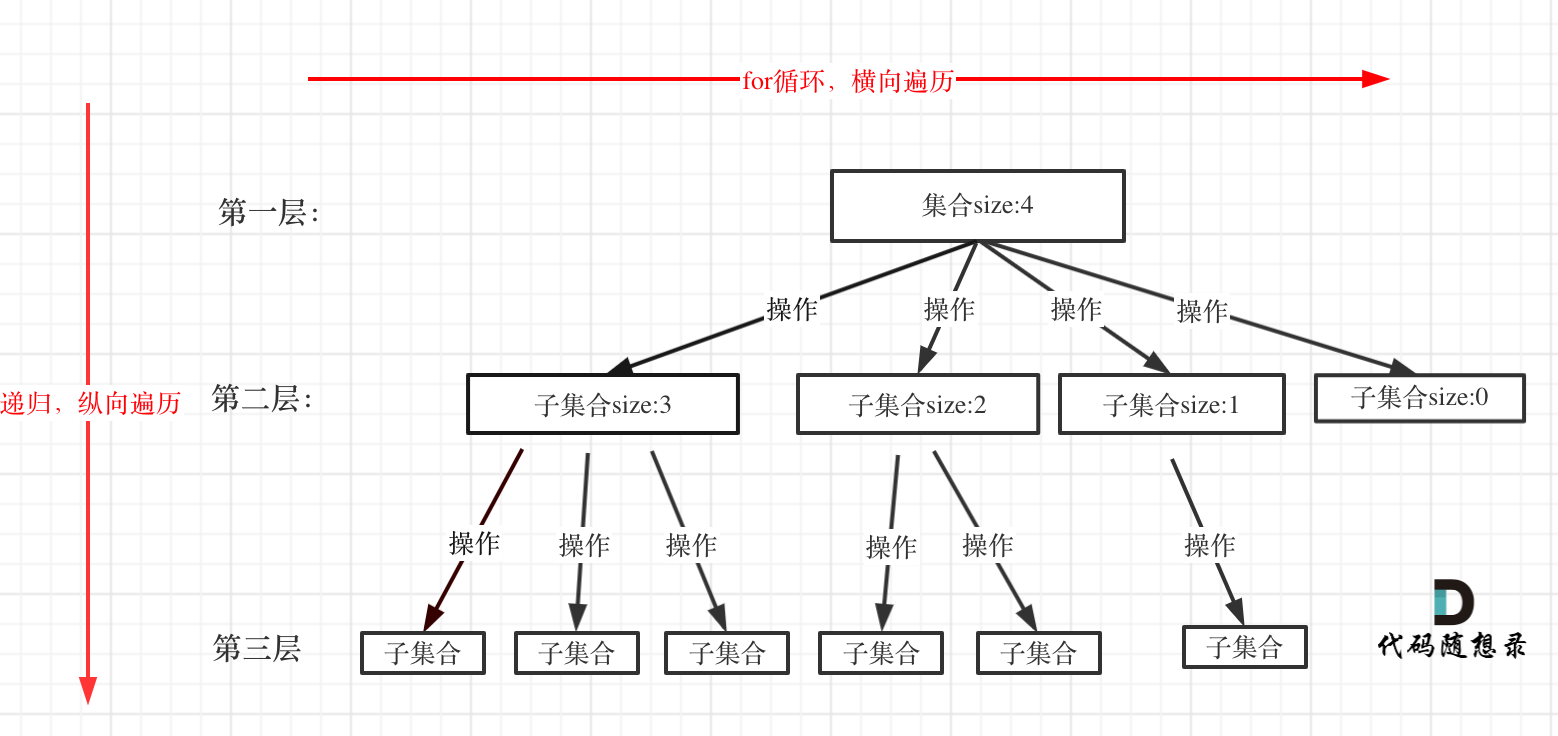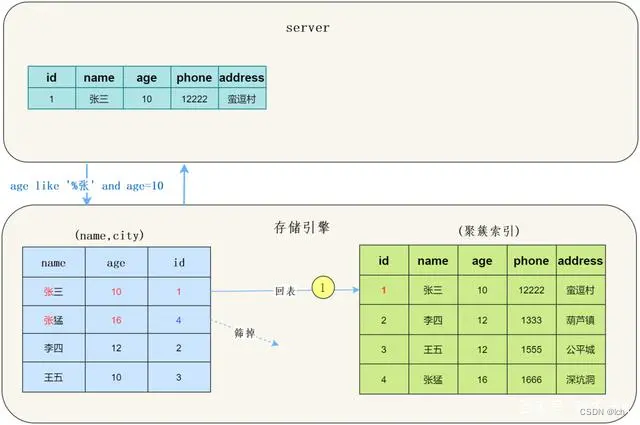给你两个字符串 start 和 target ,长度均为 n 。每个字符串 仅 由字符 'L'、'R' 和 '_' 组成,其中:
- 字符
'L'和'R'表示片段,其中片段'L'只有在其左侧直接存在一个 空位 时才能向 左 移动,而片段'R'只有在其右侧直接存在一个 空位 时才能向 右 移动。 - 字符
'_'表示可以被 任意'L'或'R'片段占据的空位。
如果在移动字符串 start 中的片段任意次之后可以得到字符串 target ,返回 true ;否则,返回 false 。
示例 1:
输入:start = "_L__R__R_", target = "L______RR" 输出:true 解释:可以从字符串 start 获得 target ,需要进行下面的移动: - 将第一个片段向左移动一步,字符串现在变为 "L___R__R_" 。 - 将最后一个片段向右移动一步,字符串现在变为 "L___R___R" 。 - 将第二个片段向右移动散步,字符串现在变为 "L______RR" 。 可以从字符串 start 得到 target ,所以返回 true 。
示例 2:
输入:start = "R_L_", target = "__LR" 输出:false 解释:字符串 start 中的 'R' 片段可以向右移动一步得到 "_RL_" 。 但是,在这一步之后,不存在可以移动的片段,所以无法从字符串 start 得到 target 。
示例 3:
输入:start = "_R", target = "R_" 输出:false 解释:字符串 start 中的片段只能向右移动,所以无法从字符串 start 得到 target 。
提示:
n == start.length == target.length1 <= n <= 105start和target由字符'L'、'R'和'_'组成
题解: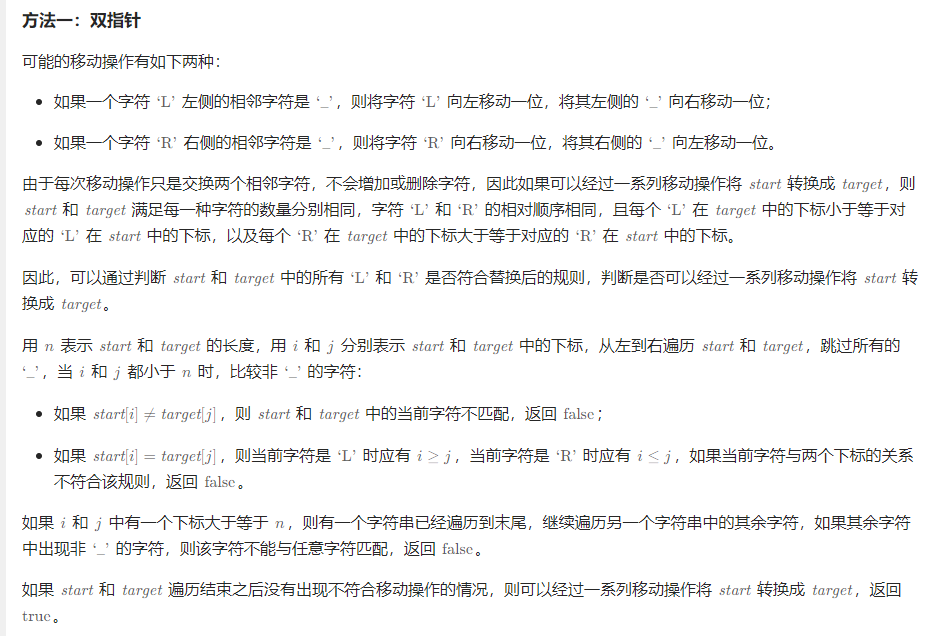
code:
class Solution {
public boolean canChange(String start, String target) {
int n = start.length();
int i = 0, j = 0;
while (i < n && j < n) {
while (i < n && start.charAt(i) == '_') {
i++;
}
while (j < n && target.charAt(j) == '_') {
j++;
}
if (i < n && j < n) {
if (start.charAt(i) != target.charAt(j)) {
return false;
}
char c = start.charAt(i);
if ((c == 'L' && i < j) || (c == 'R' && i > j)) {
return false;
}
i++;
j++;
}
}
while (i < n) {
if (start.charAt(i) != '_') {
return false;
}
i++;
}
while (j < n) {
if (target.charAt(j) != '_') {
return false;
}
j++;
}
return true;
}
}